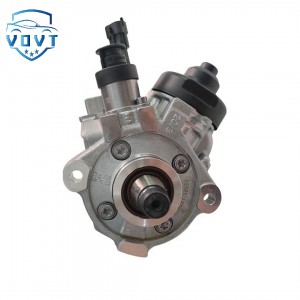Diesel Fuel Injection Pump 511-7975 5117975 Engine Auto Engine Part
products description
| Reference Code | 511-7975 |
| MOQ | 1 PCS |
| Certification | ISO9001 |
| Place of Origin | China |
| Packaging | Neutral packing |
| Quality Control | 100% tested before shipment |
| Lead time | 7~15 working days |
| Payment | T/T, Western Union, Money Gram, Paypal, Alipay, Wechat |
Research on Intelligent Monitoring and Fault Diagnosis Methods for Oil Pumps
Abstract
With the increasing demand for reliability, efficiency, and predictive maintenance in modern mechanical and automotive systems, traditional oil pump monitoring methods based on manual inspection and threshold alarms are no longer sufficient. To address this limitation, this study proposes an intelligent monitoring and fault diagnosis framework for oil pumps that integrates multi-sensor data acquisition, signal processing, and machine learning algorithms. The goal is to achieve real-time health evaluation, early fault prediction, and adaptive maintenance decision-making.
A comprehensive monitoring platform was developed using multiple sensors—such as vibration, pressure, flow rate, temperature, and motor current—to capture both mechanical and hydraulic characteristics of the oil pump under various operating conditions. The collected signals were preprocessed through noise filtering, normalization, and wavelet packet decomposition to extract sensitive features representing flow pulsation, cavitation, bearing wear, and leakage faults.
Feature fusion was performed using principal component analysis (PCA) and independent component analysis (ICA) to reduce dimensionality and enhance discriminability. Then, several intelligent diagnostic models, including Support Vector Machine (SVM), Convolutional Neural Network (CNN), and Long Short-Term Memory (LSTM) networks, were trained and evaluated to identify specific fault types and degradation levels. Experimental validation on a high-pressure oil pump test bench demonstrated that the hybrid CNN–LSTM model achieved diagnostic accuracy above 96%, and could detect incipient faults 2–5 hours earlier than conventional threshold-based methods.
To further enhance adaptability, an online adaptive learning algorithm was introduced to update model parameters in real time as the operating conditions or aging effects changed. This approach effectively maintained stable diagnostic accuracy even under load fluctuations and temperature variations. Moreover, a health index (HI) was constructed based on multidimensional feature evolution, enabling trend analysis and remaining useful life (RUL) estimation. The HI degradation model achieved prediction errors within ±8% of actual failure time, proving the feasibility of predictive maintenance for long-term oil pump operation.
In addition, fault mechanism analysis revealed that different failure modes exhibit distinct signal patterns:
-
Cavitation and flow blockage show high-frequency vibration bursts and pressure oscillations;
-
Bearing wear is characterized by low-frequency amplitude modulation in vibration spectra;
-
Seal leakage causes a gradual drop in flow rate and efficiency, accompanied by increased temperature and acoustic emissions.
The intelligent monitoring framework not only classifies these failure modes but also provides interpretable results through attention-based visualization, helping engineers identify root causes and optimize maintenance schedules.
Finally, the study demonstrates the practical applicability of the proposed system by integrating it with an IoT-based monitoring platform, enabling remote diagnostics and cloud-based data storage. This digital approach supports data-driven maintenance and enhances the overall reliability of hydraulic and lubrication systems.
The proposed intelligent monitoring and diagnosis method provides a technical foundation for the development of smart, self-diagnosing oil pump systems, contributing to energy efficiency, reduced downtime, and cost-effective operation in industrial, automotive, and aerospace applications.
Keywords:
Oil pump; Intelligent monitoring; Fault diagnosis; Machine learning; Vibration analysis; Predictive maintenance; Deep learning





























